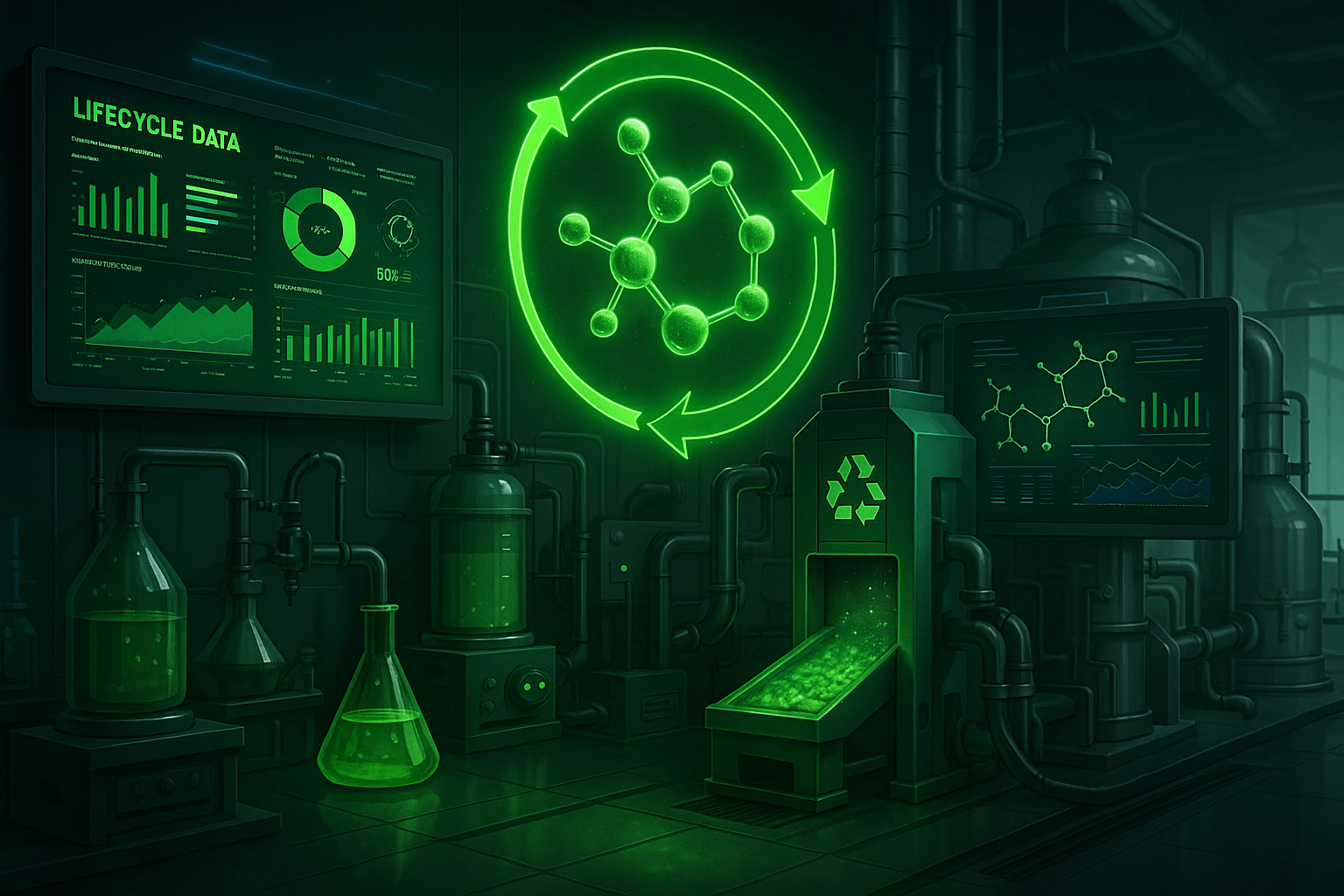Circular Chemistry: How AI is Helping Close the Loop on Waste
The chemical industry is under growing pressure to shift from linear to circular models—where waste becomes a resource, and environmental impact is minimized at every stage. But circularity isn’t just a matter of recycling—it’s a system-wide transformation that requires intelligent design, material tracing, and process optimization.
Artificial intelligence (AI) is emerging as a crucial enabler of this transformation, giving scientists, engineers, and sustainability leaders the tools to close the loop—intelligently and at scale.
From Linear to Circular: A New Mandate for Chemistry
Traditional chemical production has long followed a linear path: extract, produce, consume, discard. The result? Rising volumes of chemical waste, depleted resources, and unsustainable emissions. Circular chemistry flips this model by designing materials and processes that extend product lifespans, regenerate feedstocks, and eliminate waste.
Achieving circularity requires granular control over materials, formulations, and life cycles—and that’s where AI makes the difference. Rather than relying solely on human intuition or trial-and-error, AI enables a data-driven approach to circular design and operations.
How AI Helps Identify and Reduce Embedded Carbon
To close the loop effectively, companies need to understand the full environmental cost of a product—from sourcing to disposal. As explored in this article on carbon footprints, AI is helping quantify and reduce the embedded carbon in chemical products.
AI algorithms can simulate and compare the CO₂ impact of raw materials, synthesis pathways, and packaging options, allowing teams to make sustainable decisions at the formulation stage. When integrated with LCA (Life Cycle Assessment) data and PLM systems, these insights become part of a continuous improvement loop that prioritizes both performance and sustainability.
Closing the Loop Through Upcycling and Intelligent Substitution
A major challenge in circular chemistry is how to reuse or repurpose waste without compromising product quality or regulatory compliance. As discussed in this article on AI-powered upcycling, AI can assist by predicting which byproducts or recycled feedstocks can replace virgin inputs.
By learning from vast databases of chemical reactions and material properties, AI can suggest substitutions that reduce waste and cost—without introducing new risks. This unlocks new pathways for circular product innovation, such as using CO₂ as a feedstock or converting industrial byproducts into new ingredients.
Smarter Lifecycle Assessment with AI Integration
Life Cycle Assessment is central to circularity, but the traditional process is labor-intensive, static, and often delayed. That’s changing. As explored in our lifecycle assessment article, AI helps automate and update LCAs in near real time.
This means companies can assess environmental impact dynamically as formulations, suppliers, or regulations change. Combined with AI-powered design tools, this capability allows R&D and sustainability teams to balance performance, cost, and carbon in every decision.
Toward Closed-Loop Innovation with Chemcopilot
Circular chemistry demands more than good intentions—it requires a smart, connected ecosystem. That’s why platforms like Chemcopilot are integrating AI with formulation management, compliance tracking, and carbon calculation to give companies the tools to act on circular principles.
Whether you’re selecting greener ingredients, designing recyclable packaging, or exploring carbon-negative pathways, AI is a key part of closing the loop—and transforming waste into value.

